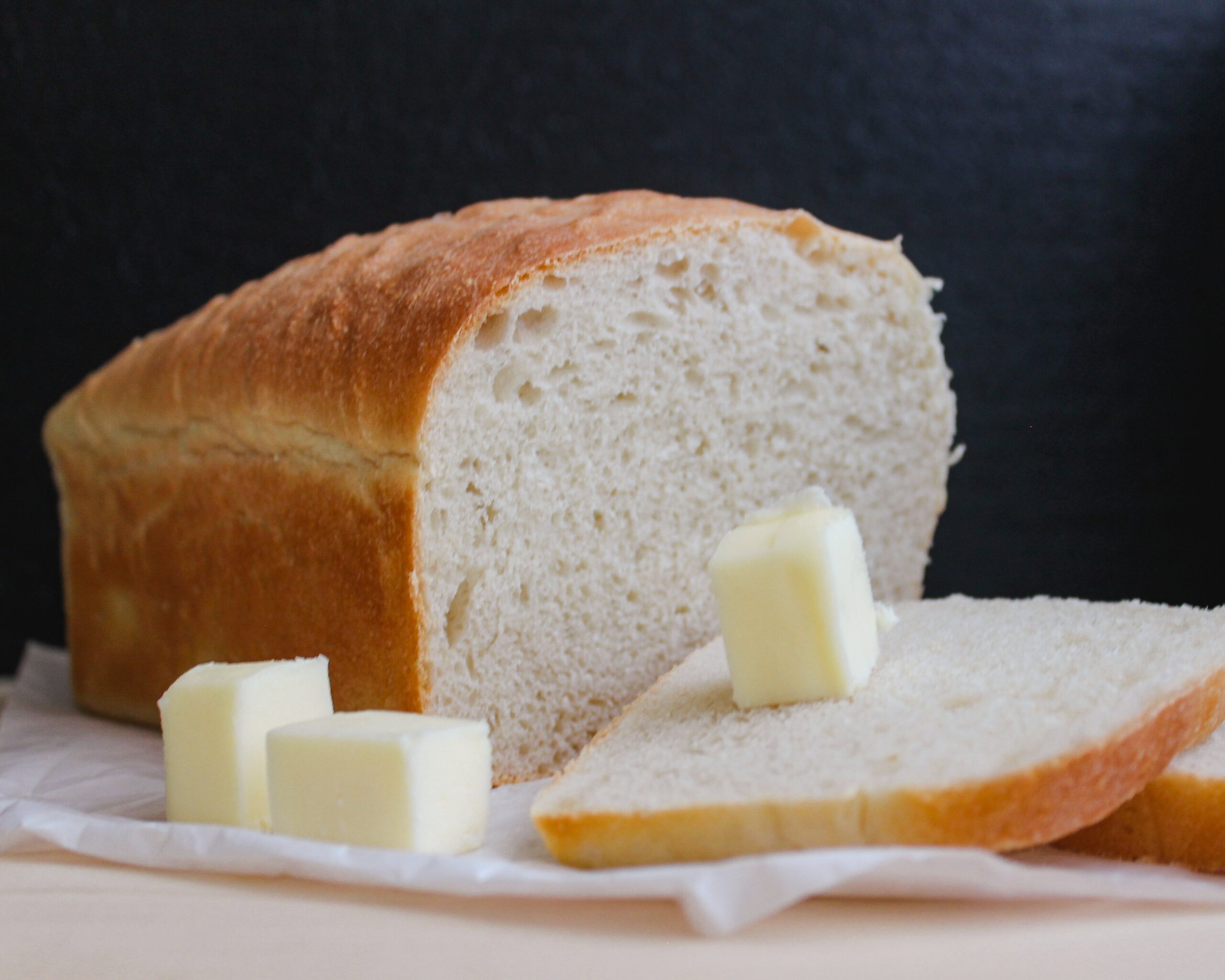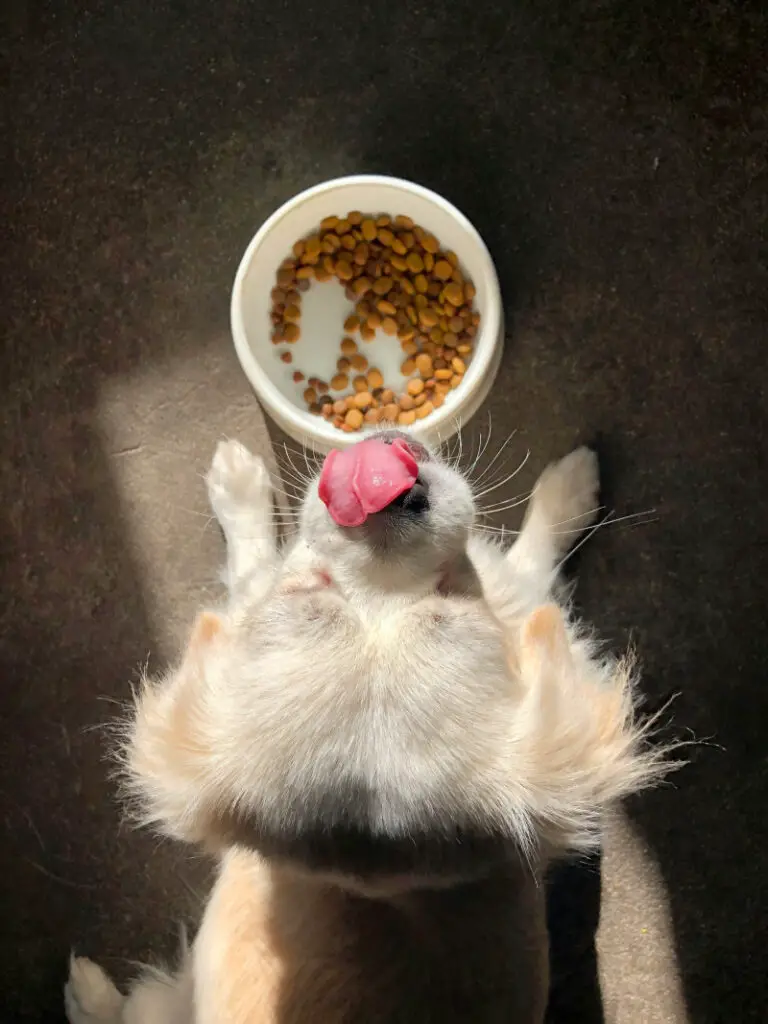With prevailing misconceptions that dogs can safely consume the same foods humans do, many pet owners find themselves in dubious positions when it comes to feeding their dogs. In the spotlight of this uncertainty is a common dietary staple, bread. A simple trip through the grocery aisle or a fresh loaf baked at home both present the possibility for a canine treat. But the question remains, can dogs eat bread?
Dog owners often share their food with their dogs, loving the delight visible in their pet’s eyes and wagging tails. However, they often overlook the potential harm certain foods could cause their furry friends. Bread, in particular, is one food that raises brows, causing debate among professionals and pet owners alike about its suitability in a dog’s diet.

Our understanding of canine food safety has increased over time, shining light on the drastic differences between human and canine biology. The simplicity of bread – a seemingly harmless combination of flour, water, and yeast – hides complex processes of digestion that differ vastly between you and your canine companion. This raises vital concerns about the harmful or beneficial effects of bread on dogs.
Let’s delve into the intricacies of what happens when dogs consume bread. From dogs eating bread to more complicated questions about bread toxicity in dogs, we’re pawing at the heart of the matter – the bread ingredients and their impact on dogs’ health. Adequately understanding this topic is crucial, as it can preserve the health of your pet, ensuring that they live a long, healthy life.
By scrutinizing how the typical ingredients of bread can impact a dog’s health and getting to grips with their digestion, owners can make informed decisions regarding their dogs’ dietary requirements. This analysis also provides the needed clarity about the possible hazards hidden within that plain loaf of bread on the kitchen counter.
In debunking myths and unveiling well-researched facts, we are stepping towards achieving a better understanding of our dogs’ health. After all, your beloved pet trusts you to make the best decisions for them– and providing them a safe dietary regime forms the foundation of a long-lasting, enjoyable pet-ownership.
Table of Contents
Discussion on the General Composition of Bread
Diving into the conventional slices of bread gracing our breakfast tables, we encounter an assemblage of ingredients that vary in their effects on dogs. To understand the issue of dogs eating bread, we must fundamentally understand what constitutes bread, and how these ingredients impact a dog’s health.

Exploration of ingredients present in common household bread
A typical loaf of bread mainly comprises of flour, yeast, water, and additional compounds like salt, sugar, and certain fats. While these ingredients are quite safe and even beneficial for humans, they might not necessarily apply the same way when it comes to feeding bread to dogs.
Flour and its Impact on Dogs
Flour, the main component in bread, is a broad term encompassing various grains, including wheat, barley, rye, and more. Delving into bread safe for dogs, whole grain or wheat flours can be a less risky option as they offer more nutritional value than their white, refined counterparts. However, the question arises, can dogs eat wheat? The answer lies in moderation, as an excessive intake of wheat or other grains could lead to a bloated stomach or more severe issues like canine gluten intolerance or allergies.
Yeast and its Effects on a Dog’s System
Yeast, a crucial element in bread-making, can be toxic to dogs if consumed in raw dough form causing bloating and potential life-threatening situations. However, in baked goods for dogs, yeast is typically safe as baking neutralizes its detrimental effects. Nonetheless, yeast doesn’t offer any significant nutritional benefits to your dog, essentially making it a filler ingredient in a dog’s bread consumption.
Roles of Additives like Sugar and Salt
Added sugar, salt, and fats serve to enhance bread’s taste and texture but contribute little to a dog’s nutritional needs. In fact, excessive sodium could lead to dehydration and sodium ion poisoning in dogs while high sugar content can potentially lead to obesity and dental issues.
Types of Bread and Their Varied Compositions
Not all bread is created equally. Different types contain varying ingredients, implying that some might be safer for dogs than others.
Whole Grain Bread
Dogs and grain digestion is a topic often broached upon. Whole grain bread provides fiber and certain vitamins, making it a healthier choice over white bread. However, dogs don’t require a high amount of fiber in their diet compared to humans. Therefore, while dogs can have loaf of whole grain, it should be administered in regulated portions.
Refined White Bread
Lacking in nutritive value due to the processing of grains, white bread essentially provides empty calories and can contribute to weight gain over time if overfed to dogs.

Specialty Bread Types like Sourdough and Cornbread
Specialty breads are crafted with additional ingredients that might not sit well with dogs. For instance, sourdough bread contains alcohol derivatives from the fermentation process, which can be harmful to dogs. Cornbread, on the other hand, is generally safe but also low in nutrient content.
Bread’s Nutritional Value and Deficiency
Human foods, including bread, can’t often cater to canine nutritional needs. To appreciate bread’s role in a dog’s diet, we must compare it against a dog’s dietary requirements.
Difference between Human and Canine Nutritional Needs
While people require more carbohydrates in their diet, dogs thrive on protein-rich diets. Despite bread being a major carb source, dogs generate glucose (energy) efficiently from proteins and fats. This, therefore, negates bread’s perceived energy benefits for dogs.
What Bread Can and Cannot Provide to a Dog’s Diet
Bread lacks the crucial nutrients dogs need such as specific proteins, vitamins and minerals. To amend this deficiency, some pet owners might resort to homemade bread recipes tailored for dogs. For example, dog-friendly loafs might integrate canine-suitable proteins and veggies to create a nutrient-rich treat. This approach, however, shouldn’t replace a balanced dog diet, but instead, compliment it.
Detailed and Exemplified Consequences of Bread Consumption in Dogs
Can dogs eat bread without any repercussions? While most canines can digest small quantities of bread without immediate harm, it’s essential to understand the potential consequences, both short-term and long-term, of bread consumption in dogs.
Short-term Effects
Feeding bread to dogs may raise several immediate consequences. Everything from simple digestive issues to sudden changes in behavior can be triggered by this seemingly innocent, daily staple.
Digestive Problems
The digestion process differs significantly between humans and dogs. Dogs and grain digestion have a less harmonious relationship, since our furry friends do not break down carbohydrates and grains as efficiently as we do. Consuming bread may lead to digestive discomfort in dogs, such as diarrhea or constipation.
Bloating and Discomfort
Bread, especially those with yeast, can potentially cause bloating in dogs. The yeast in dough can continue to ferment in a dog’s stomach, leading to stretching and distension, causing great discomfort.
Changes in Behavior and Energy Levels
High-carb foods like bread can cause sudden spikes and drops in a dog’s blood sugar levels. This can subsequently result in fluctuating energy levels, mood shifts, and unusual behavior.

Long-term Side Effects of Regular Bread Intake
While pets consuming bread might not immediately present concerns, consistent inclusion of bread in a dog’s diet can pose several long-term health risks.
Obesity and Associated Complications
Bread is high in calories and carbs, but low in essential nutrients. Regular bread consumption can lead to unnecessary weight gain in dogs, increasing their risk of obesity. Obesity can spur several complications, including heart diseases, arthritis, and lowered life expectancy.
Diabetic Risks
Just like in humans, regular intake of high-carb, sugary foods can increase the risk of dogs developing diabetes. Bread, particularly those with added sugars, can contribute to this risk, especially in senior dogs or breeds prone to diabetes.
Impact on Dental Health
Starchy foods, such as bread, can easily get stuck between your dog’s teeth, leading to tartar buildup and dental decay over time. Regular and unchecked consumption of bread may lead to deteriorating dental health, a commonly overlooked aspect of canine health care.
Severity and Frequency of Bread-related Health Issues Among Dogs
The severity and frequency of bread-related health issues in dogs often depend on several factors, such as the quantity of bread consumed, the dog’s overall diet and health, as well as their tolerance level towards certain bread ingredients.
Cases of Immediate Allergic Reactions
Some dogs might exhibit immediate allergic reactions to bread, typically as a response to wheat or gluten. Symptoms may include skin irritation, itchy paws, excessive paw licking, and gastric distress. In such cases, excluding ingredients conducive to allergies from a dog’s diet becomes vital.
The Role of Quantity in Bread Consumption Risk
The old adage “moderation is key” holds true even in the case of dogs eating bread. While small portions of certain types of bread are unlikely to be harmful, large or regular quantities are a cause for concern and may lead to the issues explored above. Ultimately, an understanding and adherence to dog diet restrictions are crucial to long-term canine health.
Responsible Bread Feeding Practices and Alternatives for Dogs
Understanding the broad outcomes of dogs eating bread, one can deduce that an outright prohibition isn’t necessary, but moderation and knowledge of safer bread alternatives are key. If you choose to include bread in your dog’s diet, doing so responsibly is crucial.
Safe Limits for Bread Feeding
The frequency and portion of bread, along with taking into account the specific breed or age of the dog play pivotal roles in ensuring responsible bread feeding practices for dogs.
Frequency of Bread as a Treat
Bread is not a prerequisite in a dog’s diet but can be offered as an occasional treat. Including it in their everyday food sequence can lead to complications from regular bread intake and should be avoided.
Appropriated Bread Portions According to Dog Size and Health
Size and health conditions of the pet must be kept in mind with pets consuming bread. For example, smaller breeds or dogs prone to obesity should be given lesser quantities compared to larger, more active dogs.
Precautions for Specific Breeds or Ages
Elderly dogs, puppies, or certain susceptible breeds may have specific dietary needs and restrictions, wherein even small amounts of bread might not be advised. Therefore, before feeding bread to dogs, these factors must be considered.
Instances When Bread Can Be Beneficial
While bread is not a nutrient-rich food for dogs, certain instances might call for the inclusion of specific breads in a dog’s diet, albeit for temporary therapeutic purposes or in homemade dog food recipes.
When and Why Vets Might Recommend Bread
In rare instances, vets may suggest a small quantity of plain bread to help with minor gastric discomfort or to cushion the ingestion of a lightweight, sharp object. Still, medical advice should be actively sought in such cases.
Specific Bread Types Deemed Safer
Whole grain breads, in modest portions, can be considered safer as they provide minor fiber and nutrient benefits. And while dogs can have loaf of whole grain bread, it should be sufficiently baked and free from any unsafe additives.
Adding Bread in Homemade Dog Food Recipes
Home-cooked goodies for your dog could incorporate small amounts of bread or dough. However, the base of these recipes should primarily consist of protein-rich and vitamin-rich ingredients to ensure a healthy diet for your canine friend.
Suitable Replacements for Bread as Treats
Considering bread’s low nutritional value and potential health implications, pet owners should consider healthier treat alternatives for their dogs.
Healthy Vegetables Dogs Can Eat
Fruits and vegetables like carrots, cucumbers, apples, and blueberries can serve as low-calorie and nutrient-rich snacks for dogs. However, remember to keep portion sizes small and avoid any fruits or vegetables that are toxic to dogs.
High-Protein Meat Alternatives
Dogs, being carnivores by nature, will surely appreciate and benefit from bite-sized pieces of lean meats, like chicken or turkey, as treats. And while they relish these treats, pet owners can take comfort knowing these alternatives offer essential proteins and fats their dogs need.
Wrapping Up the Bread Debate
Unraveling the complexities of the seemingly straightforward question- can dogs eat bread, we’ve ventured through the labyrinth of bread ingredients, their impact on dogs’ health, bread consumption consequences, and potential feeding practices. This exploration casts a penetrating light on the interplay between dogs and this commonly consumed human food, presenting a nuanced perspective that dog owners can lean on.
The heart of the matter resides in recognizing the fundamental differences between human and canine dietary needs. While bread, among other human foods, might seem like an innocent treat option, their regular inclusion and bread toxicity in dogs can lead to unexpected health concerns. The initial skepticism around dogs eating bread, therefore, is neither unfounded nor completely absolute.
Key elements in bread such as flour, yeast, and additives like salt and sugar, interact differently with a dog’s digestive system, as compared to humans’. This possibility of potentially disruptive impacts on dogs’ health needs acknowledgment whenever your canine friend yearns for a slice. Responsible dog ownership, in this regard, demands constant learning and vigilance; advancing your understanding of canine food safety and meticulously considering the dietary constraints of these loyal companions.

When it comes to the types of bread safe for dogs, not all loaves are created equal. Differences exist in the nutritional value and potential hazards of various bread types, from nutrient-rich whole grain bread to refined white bread. Specialty bread gets a special mention as their unique ingredients like alcohol in sourdough or sugar in cornbread might cause unwarranted harm. Hence, moderation and targeted selection should accompany feeding bread to dogs.
The effects of dogs consuming bread extrapolate far beyond immediate manifestations. From short-term digestive problems and behavior changes to long-term risks of obesity and diabetes, both aspects warrant careful attention. Furthermore, the severity of bread-related health issues can vary greatly based on different factors, reinforcing the vital role of a measured approach to feeding bread to dogs.
Looking at the brighter side, bread occasionally can play a remedial or dietary role under specific circumstances. Ensuring these instances remain the exception rather than the norm forms an essential part of balanced canine nutrition. Also, exploring healthier alternatives to bread treats, like introducing dog-friendly fruits, vegetables or high-protein meats, can delight your pup without compromising their health.
In conclusion, while dogs can technically eat bread without immediate dangers, the question should rather be – should they? Offering nutritionally rich, health-geared dog food should be the standard dietary practice. It’s advisable to view bread as an occasional extra, served in moderation, rather than as a vital part of your dog’s diet. Above all, remember to always consult your vet if you plan to make any significant changes to your pet’s diet or if you notice any adverse effects after they’ve consumed something out of the ordinary. Informed choices and mindfulness are the hallmarks of keeping your dog happy, healthy, and wagging their tail in sheer delight.




